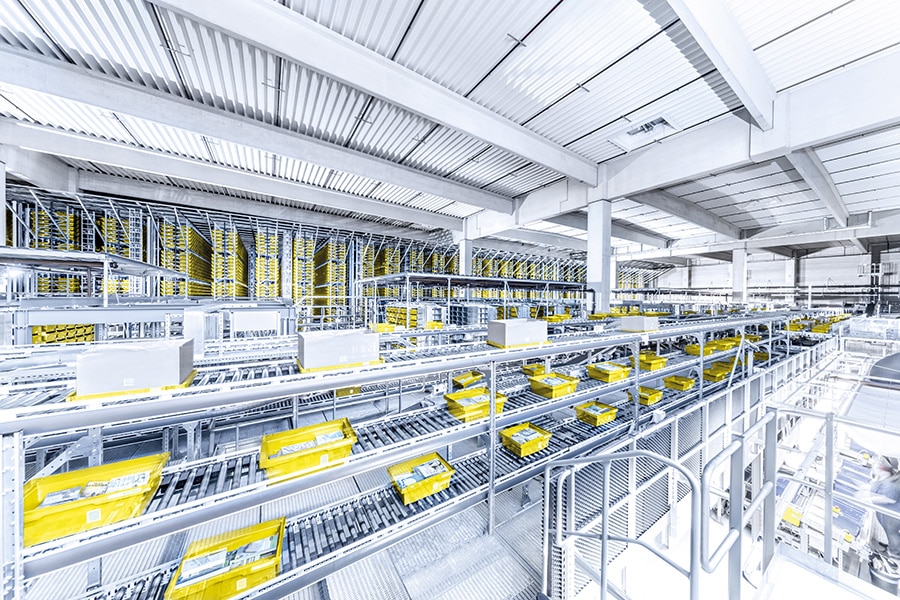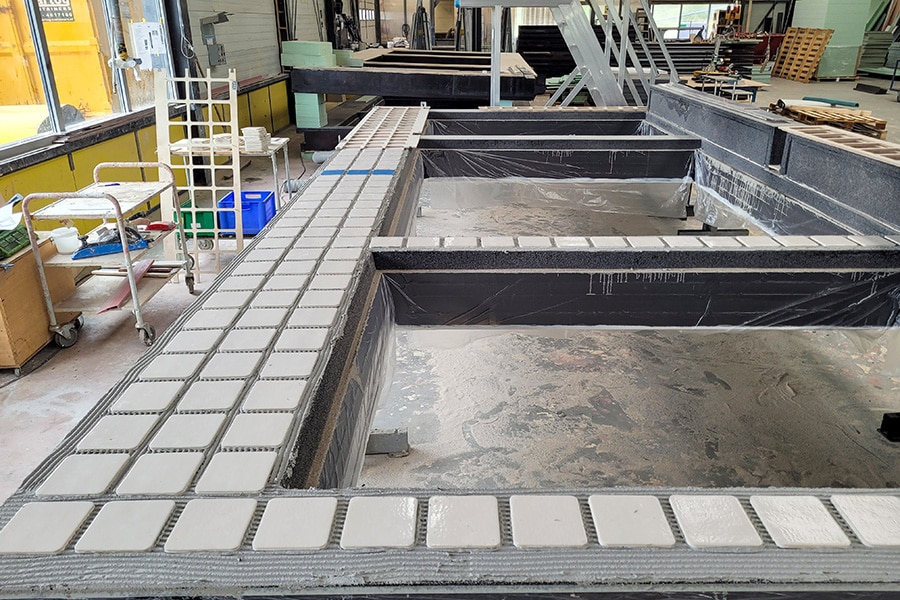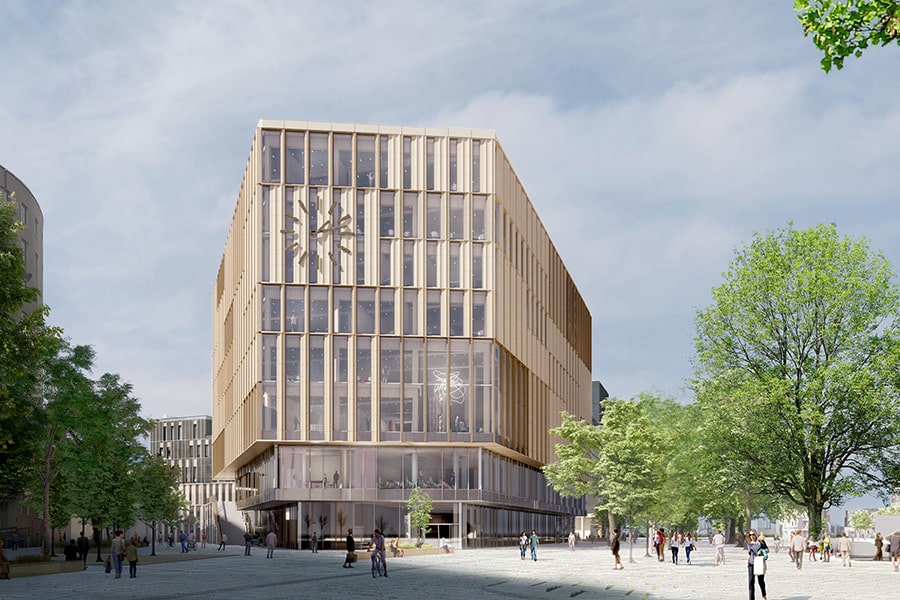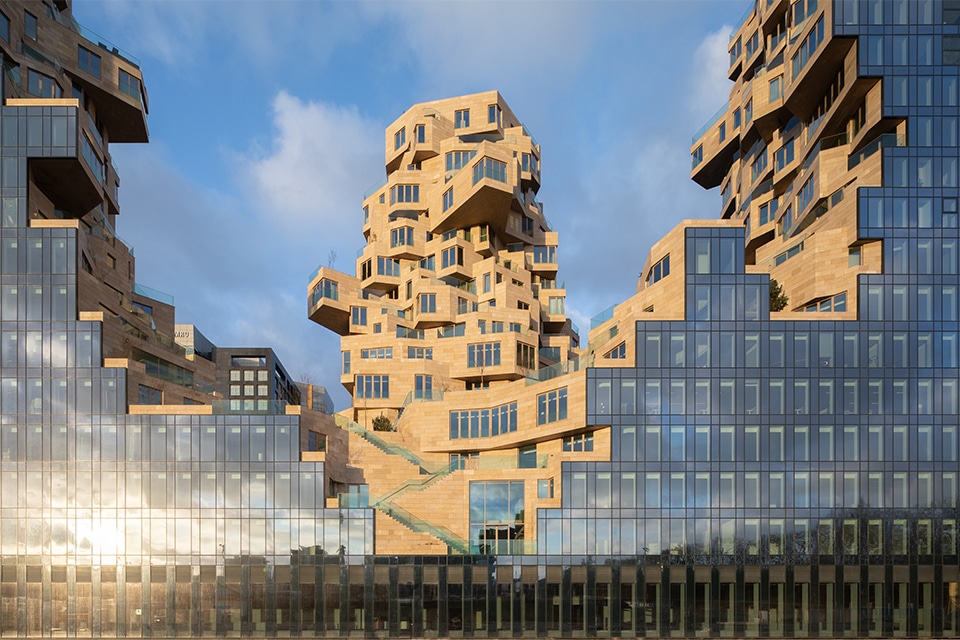
'I always bike to the office myself'
Paul de Ruiter Architects (PDR) emerged in 1994 from the ideas of Paul de Ruiter's doctoral research "The Chameleon Skin. In it, the architect argued that buildings should produce energy instead of consuming it. Since then, that vision has taken root in the construction column and PDR is still a forerunner in the field of sustainable architecture. De Ruiter himself is modest about it. "You could say that the sustainable technology was already there in the 1990s, it's now a matter of following through."
PDR has always innovated in its more than quarter century of existence. Recent projects such as the newly built QO hotel in Amsterdam, the design for a self-sufficient Fort Island Pampus and the yet-to-be-completed Horizons residential building on Zeeburgereiland are examples of projects in which upper limits are being sought in the field of sustainable architecture. This is what De Ruiter finds challenging. "The key is to entice clients with innovative solutions that pay for themselves."
Good commissioning plays a role in all the projects mentioned, as does diversity in architecture and sustainability tools. De Ruiter calls his firm's designs "non-dogmatic"; the signature is innovative exploitation. "For QO hotel, for example, we realized greenhouses on the 21st floor where food for the restaurant is grown. The building is energy-neutral, thanks in part to concrete core activation and an intelligent façade. All room systems switch off when the hotel guest is not in the room. To maintain temperature, shutters in the facade close."
'Self-sufficient and fossil-free'
Horizons, a residential building in the new Sluis neighborhood with 126 apartments, designed in collaboration with landscape architect FLUX, is another great example "because here we can really design to the maximum within the boundary conditions of the municipality of Amsterdam. The wooden structure, combined with solar panels in the facade, provides energy - with roof gardens that both collect rainwater and enrich biodiversity. Horizons saves nearly 3,000 tons of CO2 up and is a circular residential building, composed of biobased and recycled materials for 62% and reusable at the end of its useful life for 96%."
Going one step further is the redevelopment of Fort Island Pampus, which has always been self-sufficient because utilities are simply lacking. Pampus will become the first Dutch UNESCO World Heritage 100% self-sufficient and fossil-free. "What could be better than keeping the island autarkic for the future as well, combined with heritage conservation?" PDR's new entrance building will be embedded in an earthen wall, and the lack of sewerage will be solved with a bio-digester and helophyte filter. "We will also make our own water: Pampus water."
'More function mixing, less transportation'
According to De Ruiter, the breakthrough in development according to climate principles was achieved with the TNT Centre in Hoofddorp (2008-2011), an office building in which an atrium accessed by stairs is leading. The final breakthrough in the entire construction column is imminent. "Sustainable development is becoming commonplace in the world of investors, but we are not there yet," states De Ruiter. "Developing and building according to 'Paris proof' ambitions is not only a matter of innovation in technology, especially also in cost models: each party in the chain has to organize its business differently."
"If you look at the total 'footprint' of construction projects, 25% is transportation. There is still a lot of profit to be made there." Circularity based on a materials passport, demountable couplings and prefabricated building materials is the new standard. "In the shell of QO hotel, concrete was reused with the former Shell tower as the donor skeleton. The building materials for the 288 hotel rooms were delivered as IKEA packages cut to size. The great challenge of urbanism is more function mixing and densification, more social interaction and a less prominent role for the car. I always bike to the office myself."




